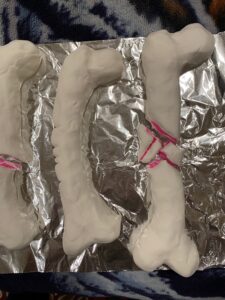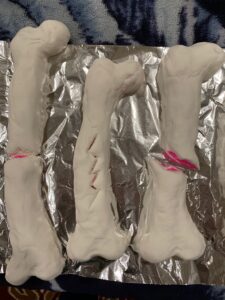For my project, I decided to research different types of bone fractures. In classwe covered bone structure, how bones heal, and touched on fractures, but we didn’t getinto the type of fractures much, which I thought would be very interesting to learn about.My original idea was to acquire actual bones (animal) so that I could physically fracturethem in different ways in order to achieve different types of fractures. I could notmanage to get my hands on any animal bones, despite calling Fish and Game and themeat departments of a few retail stores (hoping they had some fresh bones from meatthey butchered). My second thought was to visit the pet stores and get some of the cowleg bones that are packaged for dogs. The issue I found with this idea was that whilethis theoretically would have worked, the marrow inside the bones had ossified and wasnear impossible to break in the ways I had been planning. I ended up resorting to doingmy best to model the fractures out of modeling material (this was a last resort because I am honestly terrible at anything artistic).
The fractures from top to bottom are (third photograph): transverse, stress, oblique, greenstick, and comminuted.




This STEAM project was on the different types of bone fractures. Its purpose was to elaborate on the different types of bones fractures, as we had not gone into detail about them in this course. The types of fractures include, but are not limited to transverse, stress, oblique, greenstick, and comminuted. Transverse fractures are fractures that are across the bone perpendicularly. Stress fractures are small cracks in the bone because of stress. Oblique fractures are fractures that go diagonally across the bone in a similar fashion as transverse fractures. Greenstick fractures that are a result of the bone bending beyond what is normal but does not cause a full break. When bone breaks into more than two pieces, it is called a comminuted fracture. For the art piece, since real animal bones were hard to come by, modeling material was used. The inside, spongy layer of bone was represented by pink modeling clay, and the outside with white clay. The bone being represented is the femur, as it is a more common bone to break.